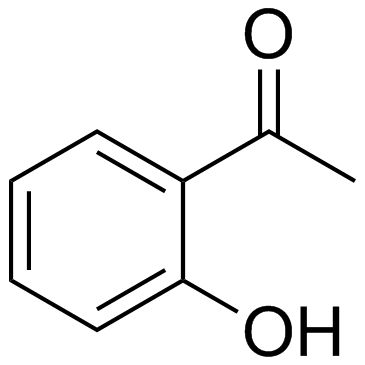Bivalent transition metal complexes of o-hydroxyacetophenone [N-(3-hydroxy-2-naphthoyl)] hydrazone: spectroscopic, antibacterial, antifungal activity and thermogravimetric studies.
R R Zaky, K M Ibrahim, I M Gabr
文献索引:Spectrochim. Acta. A. Mol. Biomol. Spectrosc. 81(1) , 28-34, (2011)
全文:HTML全文
摘要
Schiff base complexes of Cu(II), Ni(II) and Zn(II) with the o-hydroxyacetophenone [N-(3-hydroxy-2-naphthoyl)] hydrazone (H(2)o-HAHNH) containing N and O donor sites have been synthesized. Both ligand and its metal complexes were characterized by different physicochemical methods, elemental analysis, molar conductivity ((1)H NMR, (13)C NMR, IR, UV-visible, ESR, MS spectra) and also thermal analysis (TG and DTG) techniques. The discussion of the outcome data of the prepared complexes indicates that the ligand behave as a bidentate and/or tridentate ligand. The electronic spectra of the complexes as well as their magnetic moments suggest octahedral geometries for all isolated complexes. The room temperature solid state ESR spectrum of the Cu(II) complex shows d(x2-y2) as a ground state, suggesting tetragonally distorted octahedral geometry around Cu(II) centre. The molar conductance measurements proved that the complexes are non-electrolytes. The kinetic thermodynamic parameters such as: E(#), ΔH(#), ΔG(#), ΔS(#) are calculated from the DTG curves, for the [Ni(H(O)-HAHNH)(2)] and [Zn(H(2O)-HAHNH)(OAc)(2)]·H(2)O complexes using the Coats-Redfern equation. Also, the antimicrobial properties of all compounds were studied using a wide spectrum of bacterial and fungal strains. The [Cu(Ho-HAHNH)(OAc)(H(2)O)(2)] complex was the most active against all strains, including Aspergillus sp., Stemphylium sp. and Trichoderma sp. Fungi; E. coli and Clostridium sp. Bacteria.Copyright © 2011 Elsevier B.V. All rights reserved.
相关化合物
| 结构式 | 名称/CAS号 | 分子式 | 全部文献 |
|---|---|---|---|
 |
邻羟基苯乙酮
CAS:118-93-4 |
C8H8O2 |
|
Carbonyl reductase SCRII from Candida parapsilosis catalyzes...
2011-01-01 [Bioresour. Technol. 102(2) , 483-9, (2011)] |
|
Accessibility and selective stabilization of the principal s...
2012-08-06 [Inorg. Chem. 51(15) , 8241-53, (2012)] |
|
Synthesis, spectral and antimicrobial activity of Zn(II) com...
2013-09-01 [Spectrochim. Acta. A. Mol. Biomol. Spectrosc. 113 , 393-9, (2013)] |
|
Synthesis and photoluminescence properties of novel europium...
2008-02-01 [Spectrochim. Acta. A. Mol. Biomol. Spectrosc. 69(2) , 664-9, (2008)] |
|
Palladium-catalyzed carbonylation reaction of aryl bromides ...
2012-10-01 [Chemistry 18(40) , 12595-8, (2012)] |